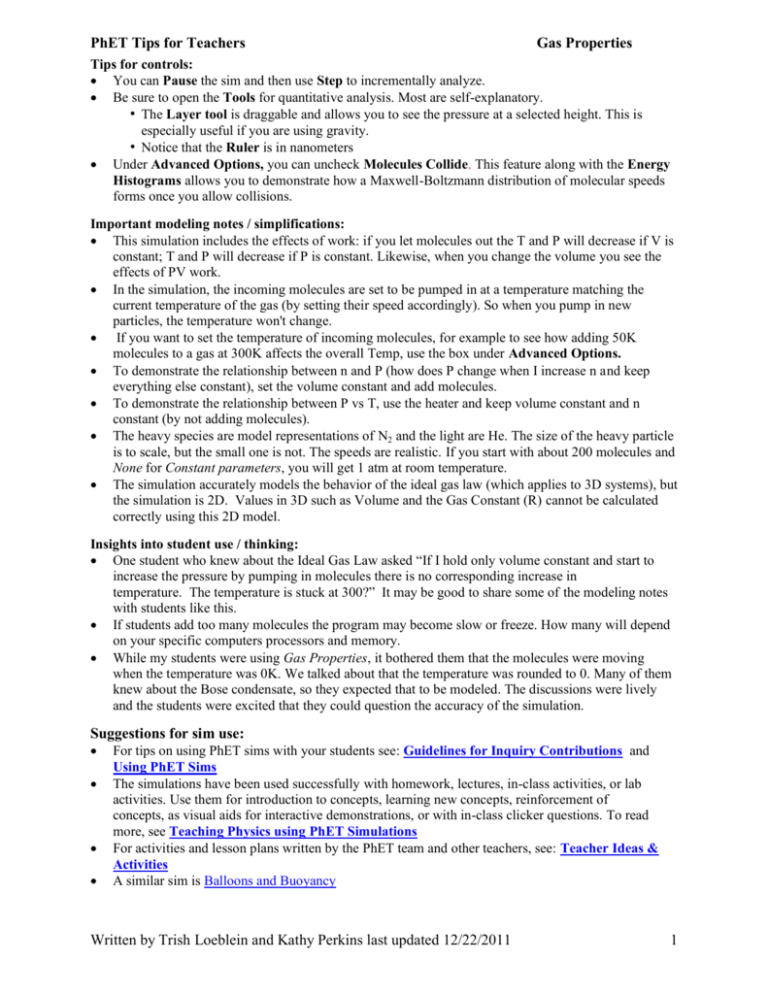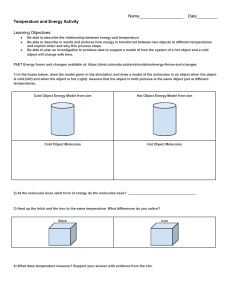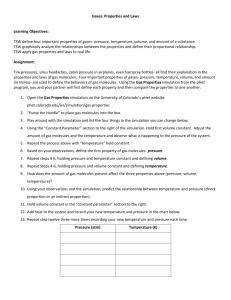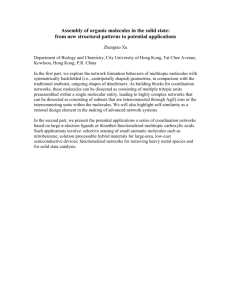Gas Properties
advertisement

PhET Tips for Teachers Gas Properties Tips for controls: You can Pause the sim and then use Step to incrementally analyze. Be sure to open the Tools for quantitative analysis. Most are self-explanatory. • The Layer tool is draggable and allows you to see the pressure at a selected height. This is especially useful if you are using gravity. • Notice that the Ruler is in nanometers Under Advanced Options, you can uncheck Molecules Collide. This feature along with the Energy Histograms allows you to demonstrate how a Maxwell-Boltzmann distribution of molecular speeds forms once you allow collisions. Important modeling notes / simplifications: This simulation includes the effects of work: if you let molecules out the T and P will decrease if V is constant; T and P will decrease if P is constant. Likewise, when you change the volume you see the effects of PV work. In the simulation, the incoming molecules are set to be pumped in at a temperature matching the current temperature of the gas (by setting their speed accordingly). So when you pump in new particles, the temperature won't change. If you want to set the temperature of incoming molecules, for example to see how adding 50K molecules to a gas at 300K affects the overall Temp, use the box under Advanced Options. To demonstrate the relationship between n and P (how does P change when I increase n and keep everything else constant), set the volume constant and add molecules. To demonstrate the relationship between P vs T, use the heater and keep volume constant and n constant (by not adding molecules). The heavy species are model representations of N2 and the light are He. The size of the heavy particle is to scale, but the small one is not. The speeds are realistic. If you start with about 200 molecules and None for Constant parameters, you will get 1 atm at room temperature. The simulation accurately models the behavior of the ideal gas law (which applies to 3D systems), but the simulation is 2D. Values in 3D such as Volume and the Gas Constant (R) cannot be calculated correctly using this 2D model. Insights into student use / thinking: One student who knew about the Ideal Gas Law asked “If I hold only volume constant and start to increase the pressure by pumping in molecules there is no corresponding increase in temperature. The temperature is stuck at 300?” It may be good to share some of the modeling notes with students like this. If students add too many molecules the program may become slow or freeze. How many will depend on your specific computers processors and memory. While my students were using Gas Properties, it bothered them that the molecules were moving when the temperature was 0K. We talked about that the temperature was rounded to 0. Many of them knew about the Bose condensate, so they expected that to be modeled. The discussions were lively and the students were excited that they could question the accuracy of the simulation. Suggestions for sim use: For tips on using PhET sims with your students see: Guidelines for Inquiry Contributions and Using PhET Sims The simulations have been used successfully with homework, lectures, in-class activities, or lab activities. Use them for introduction to concepts, learning new concepts, reinforcement of concepts, as visual aids for interactive demonstrations, or with in-class clicker questions. To read more, see Teaching Physics using PhET Simulations For activities and lesson plans written by the PhET team and other teachers, see: Teacher Ideas & Activities A similar sim is Balloons and Buoyancy Written by Trish Loeblein and Kathy Perkins last updated 12/22/2011 1









